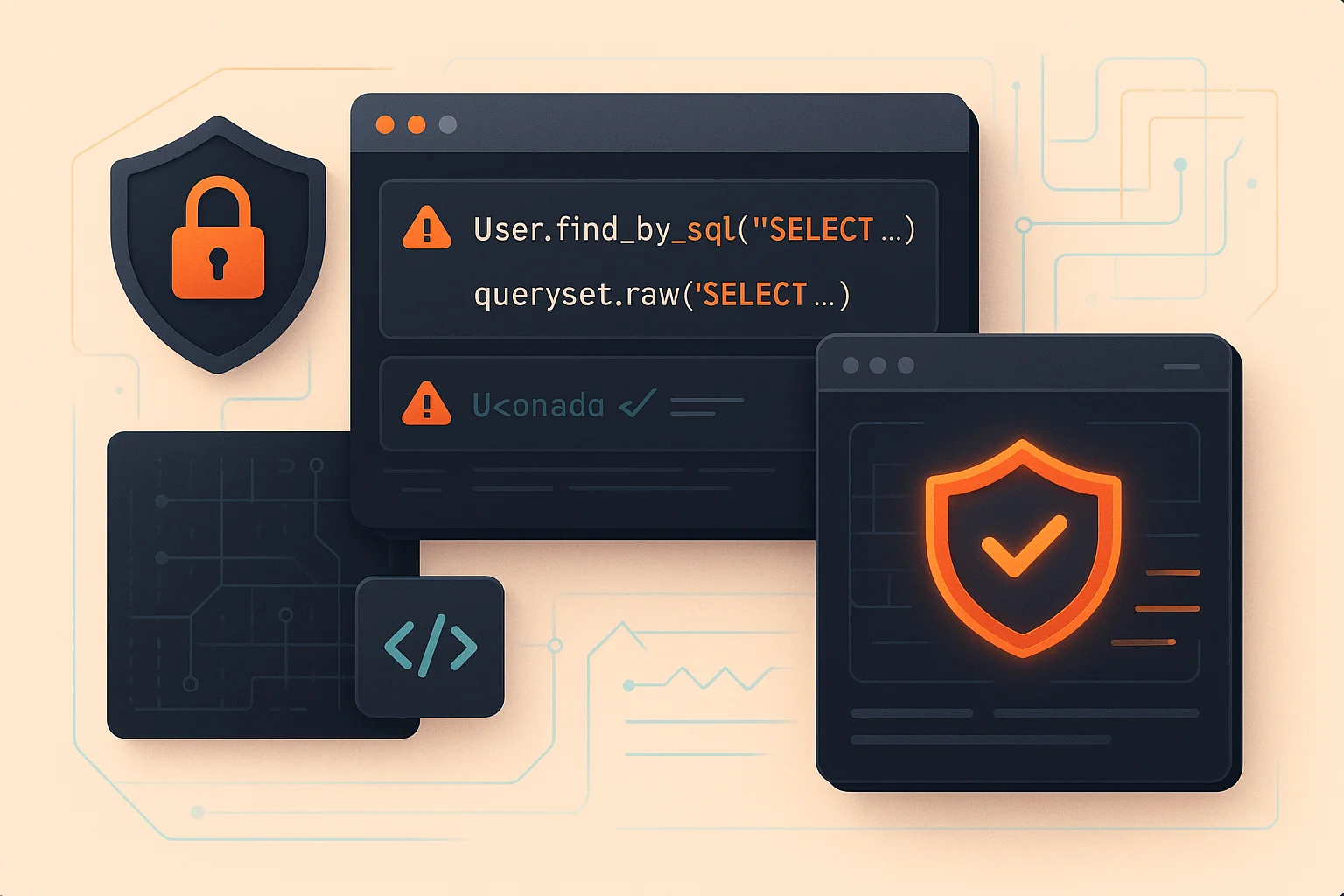Building a Security Champions Program Through Code Review

Building a security champions program transforms how organizations approach application security. By embedding security expertise across development teams and using code review as the foundation, you can scale security knowledge, catch vulnerabilities early, and build a security-first culture that grows with your organization.
Key Takeaways
- •Security champions reduce vulnerabilities by 45%: Organizations with active security champions programs show significantly lower security incident rates and faster vulnerability remediation.
- •Code review integration is critical: Champions are most effective when security knowledge is embedded directly into the development workflow through systematic code review processes.
- •Continuous training scales security knowledge: Regular skill updates and knowledge sharing sessions ensure champions stay current with emerging threats and security practices.
Security Champions Program Fundamentals
A security champions program distributes security responsibility across development teams by identifying, training, and empowering developers to become security advocates within their squads. This approach scales security expertise beyond dedicated security teams.
Core Program Components
🎯 Champion Selection Criteria
- • Strong technical foundation and coding experience
- • Interest in security and willingness to learn
- • Good communication and mentoring skills
- • Respected team member with influence
- • Committed to ongoing training and development
- • Available for 15-20% security-focused time
📋 Champion Responsibilities
- • Security-focused code reviews for their team
- • Threat modeling for new features
- • Security training and knowledge sharing
- • Incident response and vulnerability triage
- • Security tool adoption and configuration
- • Liaison with central security team
💡 Program Success Factor
Champions are force multipliers, not replacements. They extend the reach of your security team by embedding security knowledge directly into development workflows, but they don't replace the need for security specialists.
Code Review Integration Strategy
Code review serves as the perfect vehicle for security champions to apply their knowledge systematically. This integration ensures security considerations become part of every development decision rather than an afterthought.
Security-Focused Code Review Framework
🔍 Security Review Checklist for Champions
Authentication & Authorization
Input Validation & Sanitization
Data Protection
Error Handling & Logging
Champion Code Review Tools Integration
# Security Champions GitHub PR Template
## Security Review Checklist
### Authentication & Authorization
- [ ] Authentication enforced on protected endpoints
- [ ] Authorization logic validates roles/permissions correctly
- [ ] Session management follows security best practices
- [ ] JWT tokens properly signed and validated
### Input Validation
- [ ] All user inputs validated and sanitized
- [ ] SQL queries use parameterized statements
- [ ] File uploads restricted by type and size
- [ ] Output encoding prevents XSS
### Data Protection
- [ ] Sensitive data encrypted at rest/transit
- [ ] No secrets/credentials in code
- [ ] PII handling compliant with regulations
- [ ] Secure key management implemented
### Dependencies & Infrastructure
- [ ] No new high-risk dependencies added
- [ ] Security headers configured correctly
- [ ] HTTPS enforced for all communications
- [ ] Error handling doesn't leak information
### Champion Review
- [ ] Reviewed by security champion: @champion_username
- [ ] Security considerations documented
- [ ] Threat model updated (if needed)
- [ ] Security tests added/updatedChampion Training and Development Program
Effective security champions require ongoing training that combines foundational security knowledge with hands-on application of security practices in their daily development work.
Training Curriculum Framework
| Training Phase | Duration | Core Topics | Practical Application |
|---|---|---|---|
| Foundation Security | 2 weeks | OWASP Top 10, threat modeling basics, secure coding principles | Security code review exercises, vulnerability identification labs |
| Application Security | 3 weeks | Authentication, authorization, input validation, crypto | Review actual codebase for security issues, fix vulnerabilities |
| Infrastructure Security | 2 weeks | Container security, cloud security, IaC review | Security review of deployment configurations and infrastructure |
| Advanced Topics | Ongoing | Emerging threats, new technologies, advanced attack vectors | Monthly security challenges, incident response simulations |
Hands-On Training Activities
🔬 Security Labs and Exercises
- • Vulnerable Code Review: Analyze real-world vulnerable code examples and identify security flaws
- • Threat Modeling Workshops: Practice creating threat models for new features and system changes
- • Security Testing: Learn to write security unit tests and integration tests
- • Incident Response Simulation: Walk through security incident response procedures
- • Tool Mastery: Hands-on training with SAST, DAST, and dependency scanning tools
📚 Continuous Learning Resources
- • Security Newsletters: Subscribe to security advisories and threat intelligence feeds
- • Conference Training: Annual budget for security conferences and training events
- • Certification Support: Support for security certifications (CSSLP, GWEB, etc.)
- • Internal Knowledge Base: Maintain searchable repository of security best practices
- • Security Guild: Regular meetings for knowledge sharing and collaboration
Program Implementation Roadmap
Successfully launching a security champions program requires a structured approach with clear phases, measurable goals, and executive support throughout the implementation process.
Phase-Based Implementation Strategy
Phase 1: Foundation (Months 1-2)
Goals: Establish program framework and select initial champions
- • Define program charter and objectives
- • Secure executive sponsorship and budget
- • Identify and recruit first cohort of champions (8-12 people)
- • Create training curriculum and materials
- • Establish communication channels and processes
Phase 2: Training & Integration (Months 3-4)
Goals: Train initial champions and integrate security into code review
- • Complete foundational security training for first cohort
- • Implement security-focused code review processes
- • Deploy security review tools and automation
- • Establish metrics and reporting mechanisms
- • Begin regular champion meetings and knowledge sharing
Phase 3: Scale & Optimize (Months 5-8)
Goals: Expand program and optimize based on initial learnings
- • Recruit and train additional champions across all teams
- • Refine processes based on feedback and metrics
- • Implement advanced security training modules
- • Establish champion mentorship and advancement paths
- • Integrate with incident response and threat intelligence
Phase 4: Maturity & Innovation (Ongoing)
Goals: Achieve program maturity and drive continuous innovation
- • Champions leading security initiatives independently
- • Program is self-sustaining with minimal overhead
- • Advanced security practices adopted org-wide
- • Champions contributing to security tool development
- • External recognition and knowledge sharing
Measuring Program Impact and Success
Effective measurement is crucial for demonstrating program value, identifying areas for improvement, and securing continued organizational support for your security champions program.
Key Performance Indicators (KPIs)
🎯 Security Outcomes
- • Vulnerability Reduction: % decrease in security issues found in production
- • Time to Fix: Average time to remediate security vulnerabilities
- • Security Incident Rate: Number of security incidents per quarter
- • Compliance Score: Adherence to security policies and standards
- • Penetration Test Results: Improvement in external security assessments
📊 Process Metrics
- • Code Review Coverage: % of PRs receiving security review
- • Champion Activity: Security reviews performed per champion
- • Training Completion: % of champions completing required training
- • Knowledge Sharing: Number of security presentations and workshops
- • Tool Adoption: Usage rates of security analysis tools
Success Measurement Dashboard
# Security Champions Program Dashboard Metrics
## Security Impact (Monthly)
- Vulnerabilities prevented in code review: 47 (+12% vs last month)
- Critical vulnerabilities in production: 2 (-60% vs baseline)
- Average vulnerability remediation time: 3.2 days (-40% improvement)
- Security incidents: 1 (-75% vs baseline)
## Champion Activity (This Quarter)
- Active security champions: 24/28 (86% participation rate)
- Security-focused code reviews: 312 (+25% vs last quarter)
- Training sessions completed: 18/24 champions (75% completion)
- Security knowledge articles published: 8
## Program Health
- Champion retention rate: 92% (excellent)
- Champion satisfaction score: 4.2/5.0 (good)
- Security team satisfaction: 4.6/5.0 (excellent)
- Executive visibility: Monthly reports + quarterly reviews
## ROI Analysis
- Estimated cost of prevented vulnerabilities: $850K
- Program investment (annual): $180K
- ROI: 372% return on investment
- Risk reduction: 65% decrease in security risk exposureCommon Pitfalls and How to Avoid Them
Learning from common mistakes helps ensure your security champions program achieves its goals and maintains long-term sustainability and effectiveness.
Program Implementation Challenges
❌ Insufficient Executive Support
Problem: Champions feel unsupported when management doesn't prioritize security or provide necessary resources.
Solution: Secure visible executive sponsorship, regular leadership updates, and dedicated time allocation for security activities.
⚠️ Overwhelming Champions with Responsibilities
Problem: Champions become bottlenecks when given too many security responsibilities without adequate support or tools.
Solution: Clearly define scope, provide automation tools, and ensure champions have manageable workloads (15-20% time allocation).
⚡ Inadequate Training and Skill Development
Problem: Champions lack confidence or expertise to effectively identify and address security issues.
Solution: Invest in comprehensive training programs, ongoing education, and mentorship from security experts.
📈 Poor Measurement and Lack of Visibility
Problem: Unable to demonstrate program value or identify areas needing improvement.
Solution: Establish clear metrics, regular reporting, and dashboards that show both security improvements and champion contributions.
Sustaining Long-Term Success
🌱 Program Sustainability Framework
Recognition and Career Growth:
- • Create security champion career advancement paths
- • Recognize contributions in performance reviews
- • Provide conference speaking and publication opportunities
- • Offer security certification and training budgets
- • Celebrate successes publicly and frequently
Program Evolution:
- • Regular program retrospectives and improvements
- • Adapt to new technologies and threat landscapes
- • Incorporate champion feedback into program design
- • Scale program as organization grows
- • Share knowledge with broader security community
🛡️ Security champions transform code review from a quality gate into a security learning opportunity.
Scale Your Security Champions Program
Propel automatically enforces security best practices during code review, empowering your champions with AI-powered security analysis and consistent policy enforcement.
